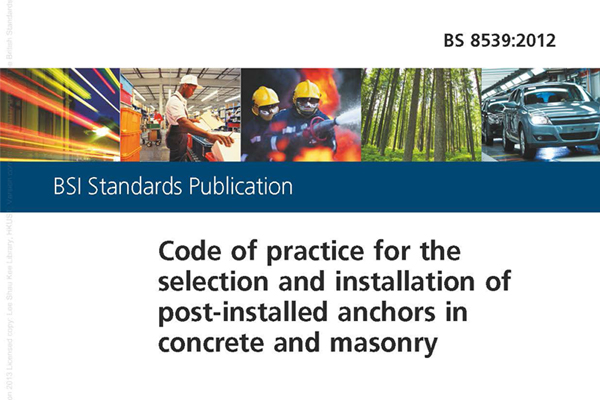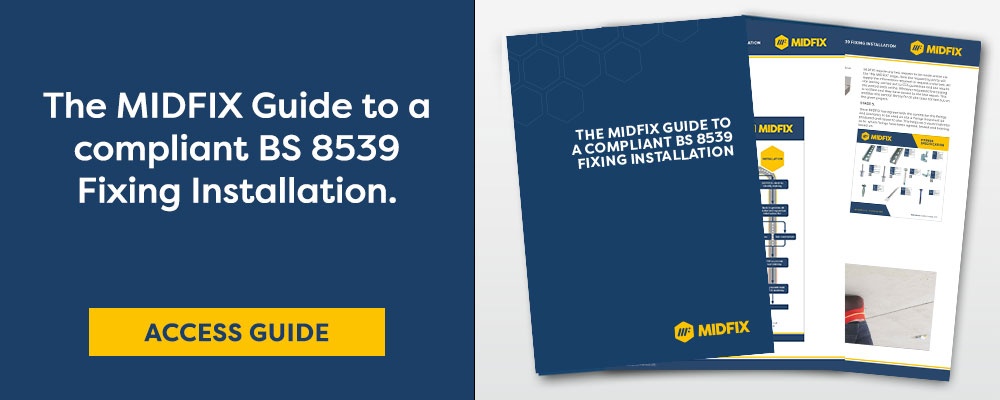What is the purpose of BS8539:2012 Code of Practice?
BS8539:2012 Code of Practice’s purpose is to guide all stakeholders within an anchor/fixing supply chain through the selection, supply, installation and testing of post-installed anchors into concrete or masonry.
BS8539:2012 specifically provides guidance on the correct selection of an anchor/fixing, the supply to the site of that anchor, anchor installation procedures, identifying appropriate testing procedures and ensuring they are carried out correctly.
Who is responsible for adhering to BS8539:2012?
Everyone within the supply chain of an anchor/fixing has a role to play, ultimately the main aim for a contractor is to ensure a safe installation, using the right anchor and installed to the manufacturer’s guidelines.
All of the supply chain is responsible, including:
- Designer
- Specifier
- Contractor
- Installer
- Site tester
- Manufacturer
- Supplier
What are the main highlights of BS 8539?
- ETA approved anchors should be used where available.
What is an ETA-approved anchor? - The correct anchor must be sourced as specified. If an alternative anchor is proposed, the change management procedure must be followed.
What is the change management procedure? - Installers must be competent with the anchor installation. They must be supervised and upon completion, the installation should be certified by the contractor's supervisor.
Installation Training - Site tests in accordance with the CFA guidance notes should be undertaken by a competent tester.
How did BS 8539:2012 Code of Practice come about?
There were specific key issues within the construction industry that needed to be addressed after a fatality over in Ireland. At that time there was no British independent body or guidance within the industry for anchors/fixings.
It was typical of a manufacturer to test their own anchors, with no independent verification which meant when the anchor/fixing was specified for a particular job, bracketry designs were based on false loading information, sometimes leading to bracketry collapse.
It is also very common in the industry to see anchor installation failure; within the M&E industry it has been said that over 80% of drop-in anchors fail due to installation error.
After a fatality in Ireland, the Irish Health and Safety Association created a standard, this was then later adapted by the CFA into the BS8539:2012 which today is seen as best practice.
How can the sector follow BS 8539?
First of all, we would recommend early engagement between the M&E contractor and the prinicpal contractor to ascertain the best practice to follow when selecting, supplying, installing, and testing anchors.
With the guidance available anchor/fixing compliance doesn't have to be complicated. By following the guidance outlined in BS 8539, the safe selection, supply, installation, testing, and training of operatives and supervisors is certainly achievable.







